“Re-dose” is the project, which deals with the issue of latent overconsumption and investigates how to change the profile or renew existing industrial resources, growth patterns, allowing human and natural resources to thrive, taking into account the introduction of full or almost complete automation and closed processes.
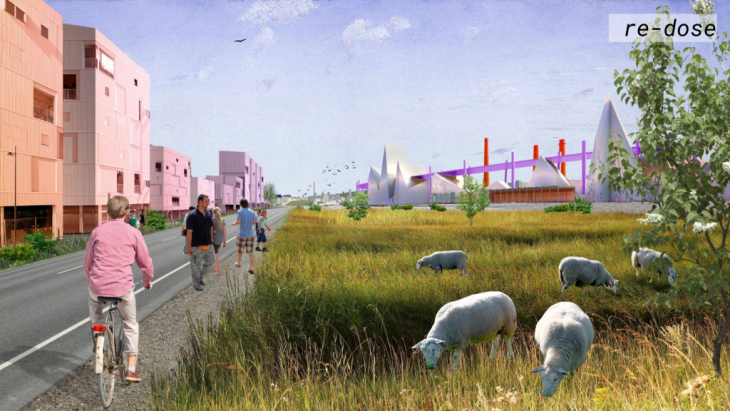
 A quick guide on how the project went and what the jury should expect.
A quick guide on how the project went and what the jury should expect.
The research was started with world data collecting turning to site Karabash collection.
Considering state-of-the-art opportunities were isolated followed by a preliminary solution of urban transition,
approaches, and then prototype, which example expected to be replicable.
 Heavy industry being the single feeder of cities which they founded has become unprofitable, but the natural and material resources invested in her organization cannot be ignored.
Heavy industry being the single feeder of cities which they founded has become unprofitable, but the natural and material resources invested in her organization cannot be ignored.
Moreover, the impossibility of securing jobs forces the human masses to move to cities with a wider choice of professions, which entails overpopulation, an anxious psychological state of citizens, and environmental collapse.
And this is just the tip of the iceberg.
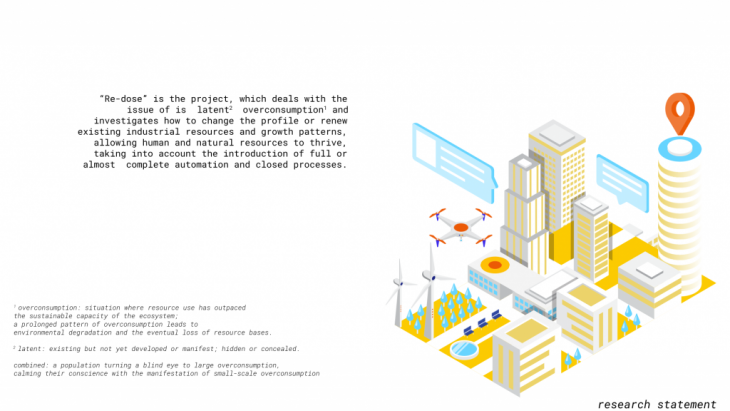
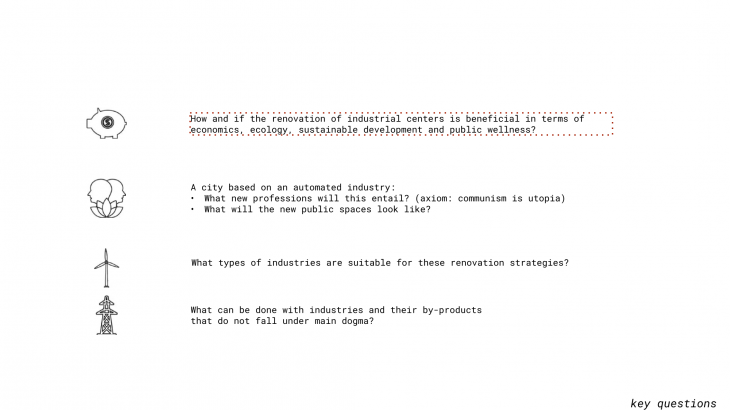
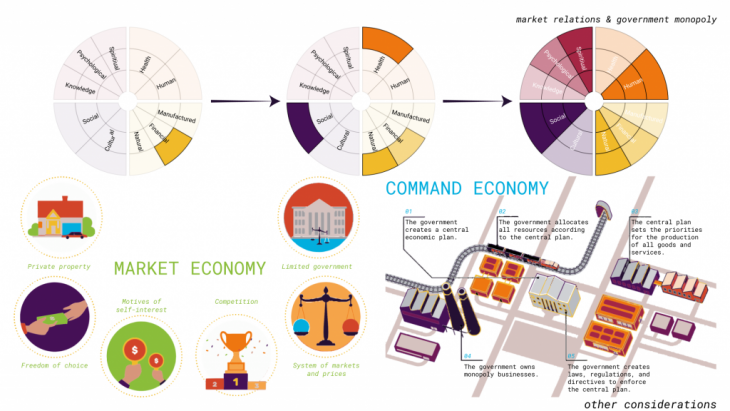 It is worth starting with an explanation of tools that are not directly related to architectural or other related design.
It is worth starting with an explanation of tools that are not directly related to architectural or other related design.
Human sciences.
For a long time, only financial capital dominated the territory of most countries. The transition in the era of democracy and mindfulness has added more detail to this diagram, but the production centers still focus only on it, not even thinking that if you balance the other aspects, the real profit will increase.
This transition undoubtedly depends on the role of the state in the economy, which differs from country to country (USA / Russia) and from century to century (Europe)
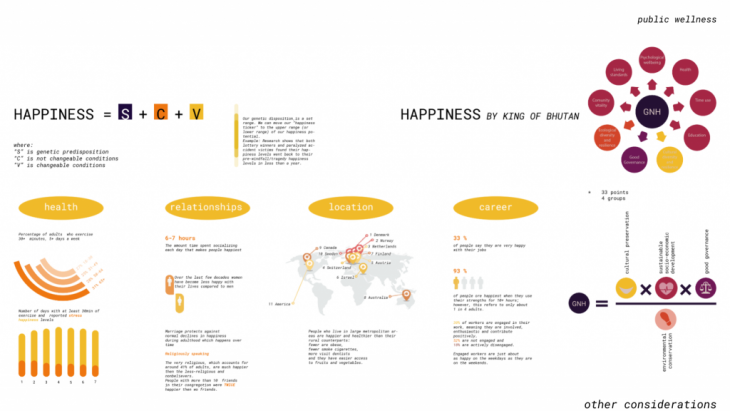 Speaking of human capital, we don’t even need to invent a bicycle – everything has long been described by the king of Bhutan, as well as by sociologists who did research after him.
Speaking of human capital, we don’t even need to invent a bicycle – everything has long been described by the king of Bhutan, as well as by sociologists who did research after him.
Happiness – human well-being can be fit into a simple expression, one of the main components of which is work – after all, most of us spend a third part of our lives there – including as well as indirect factors associated with it, such as working conditions, success, the distance that must be overcome to get to it, colleagues (one social and age group), etc.
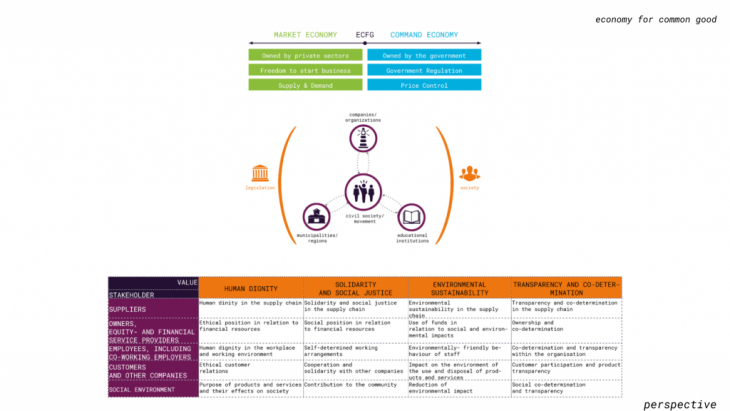 Thus, the two instruments, and so overlap with each other, are combined into a stunning “economy or common good” – an economic model that takes all the best from its predecessors, but is built with a reasonable adjustment for the general well-being of a person (which, as we recall, consists of many factors including the ecological conditions in which the subject lives)
Thus, the two instruments, and so overlap with each other, are combined into a stunning “economy or common good” – an economic model that takes all the best from its predecessors, but is built with a reasonable adjustment for the general well-being of a person (which, as we recall, consists of many factors including the ecological conditions in which the subject lives)
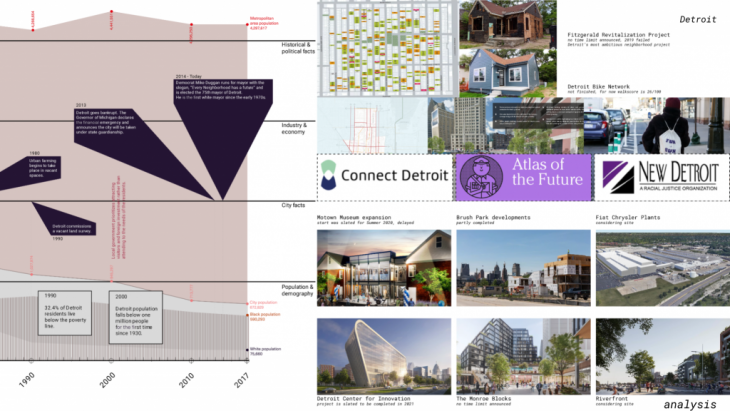 During the research, different successful examples were erroneously considered such as London, Moscow, Barcelona, ??etc., which went through all the industrial revolutions and did not remain outside the economic ship, while continuing to maintain production. But their success is due to the fact that they have never been mono-centers, being able to pick up in another place, if they lost in one.
During the research, different successful examples were erroneously considered such as London, Moscow, Barcelona, ??etc., which went through all the industrial revolutions and did not remain outside the economic ship, while continuing to maintain production. But their success is due to the fact that they have never been mono-centers, being able to pick up in another place, if they lost in one.
Another example such as Essen, a wonderful city and an example but simply does not fall under the requirements of approach, it did not pass through transit at all, only adapting and recreating/cleaning their areas.
But at the same time, we have Detroit, which, like a phoenix, had several critical ups and downs and is now trying not to drown in a new revolution.
BUT. on the slide you can see all the initiatives that have been undertaken over the past ten years, none of which have so far been successful (whether they will – we will find out later), but here are the first conclusions of what should and should not be done.
YES: Campaigning, HYPE in the media, attracting young professionals for a decent social package, retraining existing workers who have found themselves behind the revolution
NO: preserving jobs in a vacuum, reckless investment in the renovation of unprofitable production
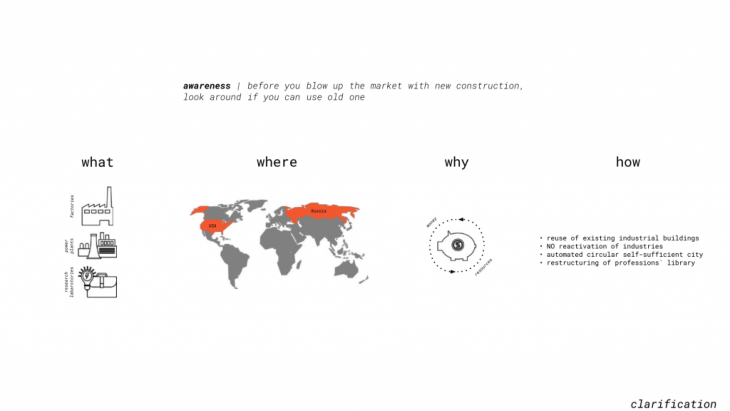 And so where do we go for the place where the power of the research is applied?
And so where do we go for the place where the power of the research is applied? 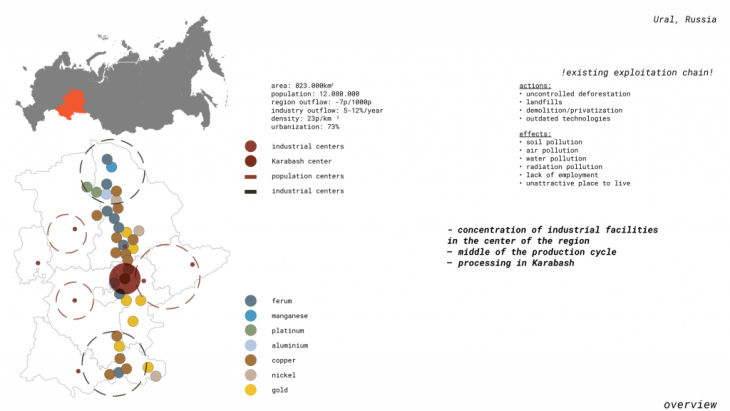 The region has a diverse and complex structure of machinery and metal industries. Nationwide importance has ferrous and nonferrous metallurgy, mechanical engineering, chemistry, mining of minerals and natural gas, logging, and wood processing.
The region has a diverse and complex structure of machinery and metal industries. Nationwide importance has ferrous and nonferrous metallurgy, mechanical engineering, chemistry, mining of minerals and natural gas, logging, and wood processing.
The Ural industry is characterized by the high concentration of production around certain areas, such as transport hubs, close cooperation between different branches, and recycling of industrial waste.
The timber production is concentrated in the north and agriculture mostly in the south. This part is necessary to highlight.
Cause as you can see Karabash is situated right in the middle of the region in different meanings of this.
On September 29, 1957, at 16:22, a 300 cubic meter tank exploded, which contained about 80 cubic meters of highly radioactive waste. According to one of the official versions, the cause of the explosion is the failure of the cooling system and, as a result, the heating and subsequent detonation of the container. According to another version, a solution containing plutonium got into the waste by mistake, when interacting with the waste, a large amount of energy was released and led to an explosion. The power of the explosion is estimated at 70-100 tons in TNT equivalent (the bomb dropped on Nagasaki had a capacity of up to 18,000 tons). Radioactive waste continues to be poured into Lake Karachay, the water heats up, evaporates, dust with harmful substances is carried by the wind across the Chelyabinsk region.
As for the Karabash itself, it’s dealing with its own drama as well.
It is important to note the existing legislation aimed at protecting such production. Despite the fact that in general terms these papers cover all the necessary aspects, the spaciousness of the wording makes it easy to get around the law, which is already sufficiently outdated to rely only on it in the existing advanced reality and the scale of pollution.
- one town-forming production
- ecological catastrophe
- the strongest outflow of population
- 686 km2
- 10.756 people
 Topography gives us the opportunity to initially understand where and how, based on the wind rose, the industry will leave its greatest mark. The existing survey has already inexorably mapped the mountains of slag.
Topography gives us the opportunity to initially understand where and how, based on the wind rose, the industry will leave its greatest mark. The existing survey has already inexorably mapped the mountains of slag.
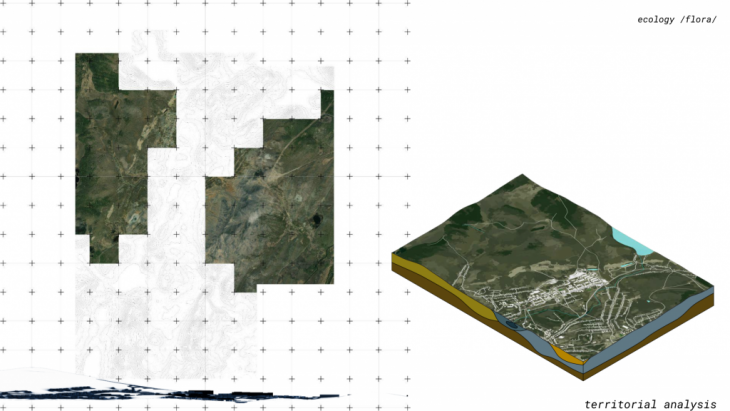 And so, despite the pollution as a whole throughout the entire city, it can be seen with the naked eye that the eastern side suffered an order of magnitude more, also because in the last century, Mount Karabash was also a place for the extraction of metals.
And so, despite the pollution as a whole throughout the entire city, it can be seen with the naked eye that the eastern side suffered an order of magnitude more, also because in the last century, Mount Karabash was also a place for the extraction of metals.
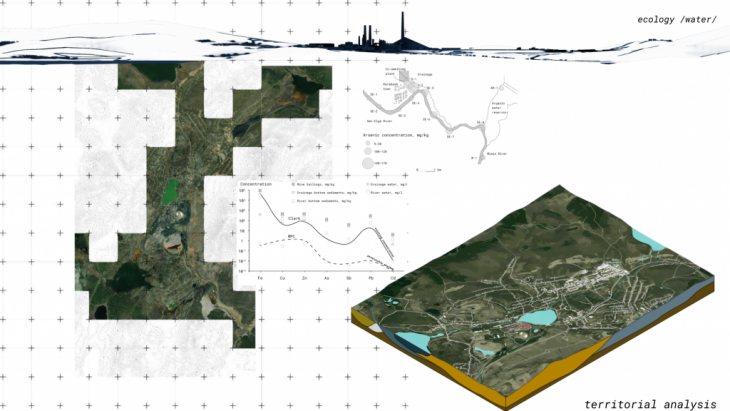 The mono-industry town embracing natural and artificial water resources. The river on the territory of the city passing through the industry is partially closed in concrete, while the Sak-Elga river in the south connects the region and carries a colossal amount of heavy metals to the entire region.
The mono-industry town embracing natural and artificial water resources. The river on the territory of the city passing through the industry is partially closed in concrete, while the Sak-Elga river in the south connects the region and carries a colossal amount of heavy metals to the entire region.
Artificial reservoirs created for the disposal of waste in the short term are indeed a more acceptable solution than burial directly into the soil because it is known that water is a poor barrier to radiation and also nailed heavy metals to the ground and in this case, the damage to the respiratory organs is less.
But this is only for the short-sighted person. Indeed, in general, thanks to drainage waters, pollution spreads to the entire region south of the city – where, as mentioned, the agricultural industry is located. In general, the city has disappointing indicators of mortality and chronic diseases in newborns.
Arsenic concentrations are substantially greater than the maximum permissible water use standards. More than that background levels were found in drainage waters from tailings at Karabash processing facilities. These drainages enter the Sak-Elga River resulting in levels of dissolved As which are above values considered safe for use. Arsenic concentrations in bottom sediments of the Sak-Elga River are elevated even 200–300 m downstream from the point where mill waste drainage enters the river.
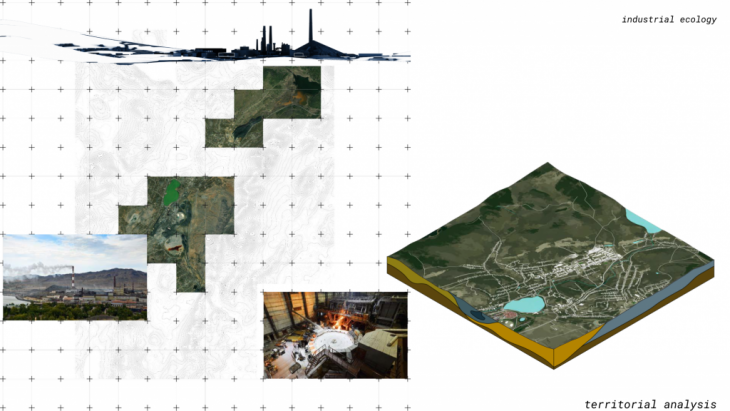 Today`s situation in Karabash could be described as an ecological and economic catastrophe which these photos can describe eloquently without words.
Today`s situation in Karabash could be described as an ecological and economic catastrophe which these photos can describe eloquently without words.
This diagram shows the bureaucratic description of zoning composition in the city according to official documents from 2016. Without going into the details of Russian construction legislation, for a primitive understanding, it is enough to clarify that an industrial zone is shown in red, shades of green, and yellow are civil buildings. Dark turquoise is vaguely referred to as “rest”, which by rules should be also understood as a civil zone.
At the same time, on these diagrams, you can see that almost all of the supposedly civilian development falls on dead shootings, and in the southeast, even on the exclusion zone, which is characterized by forests and soil that have survived acid rain. No need to explain that in general, nature is able to cope with absolutely any catastrophe, the question is only in time, which a person may not have enough.
Based on the previous data, the stages were identified, following which it would be logical to revitalize the city. From the initial step of coliving for new incoming professionals to the next stages of development.
As a solution to the ecological side of the problem – phytorevitalization and manual purification of water resources, the bottom and adjacent territories using an innovative microgel.
- and so for soil cycle is phytorevitalization with vegetative grains, after its life cycle it’s going for incineration plant on the base of existing industry, after filtration we can isolate ash which goes for further compostable usage and heavy metals which are going for micro melting production
- attraction and retraining of the population employed in the agricultural sector for the use of phytorevitalization technology. Salary – the federal budget. Planting – in the spring, extraction – in the fall of the same year (before breeding). Total cycles 5-10.
- and for the water is that after manual nailing on specific sites in the city with biomicrogel, this and also naturally connected to the river systems, filtrating solution to transfer it into metal clay composition for on-site as well light industry production of constructive parts, jewelry, and simple souvenirs as part of technology museum
as solutions applicable to construction and architecture:
- uniform image of the city – design code
- transit of copper-smelting production to reduce capacities and switch to micro-smelting production as a result of cleaning up the environmental pollution
- the first new housing – social coliving, allowing new generations of resident professionals to stay away from pollution, but have access to work on it
- old new city center passed through the landscape and architectural renovation
The main task of the parametric foundation of the city in this situation was the translation of non-digital inputs into digital ones that would fit into the general population density, walking distance, neighborhood diversity, access to workers, and their number.
This is how modern buildings will be implemented in stages after the demolition of the necessary emergency housing. Nevertheless, the city does not and should not feel saturated, since the evolutionary engine is increasing the building on the basis of accessibility to the initially set centers of gravity. because, as we know, the most successful model for building a city is wild natural, predetermined general plans of green millionaires (remember at least Masdar City) are not popular due to their artificiality.
As previously mentioned, the acquired slag mountains as well as the burial pond gave the topography a new face, which will change during the cleaning process.
Explanation preceding the functional zoning of the city.
Since it is being built up in stages, taking into account the environmental changes going on the campaign, at each stage, based on the needs of the time and existing urban connections, its center of attraction was isolated, responding to which, subsequently, construction in the city increases.
Description of services and areas associated with housing or free time of the population.
Description of services and areas associated with the work and business of the population.
 And since the result of the general plan “in 50 years” I also highlight the areas of the city, which are most curious
And since the result of the general plan “in 50 years” I also highlight the areas of the city, which are most curious
- district with the first social housing of the first stage of renovation
- a new old town as a result of a successful environmental revitalization, since the development will be in place of the existing slag dumps
- a new industry, which includes, in addition to the smelter, a technology museum and an interdisciplinary department of agrarian sciences with direct access to Mount Karabash as the main stumbling block
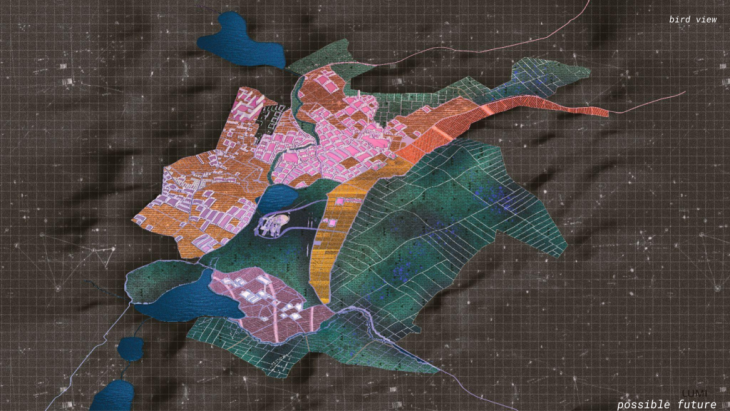
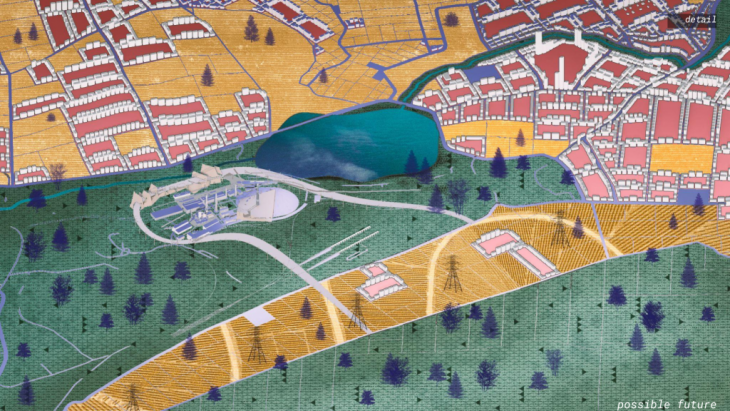

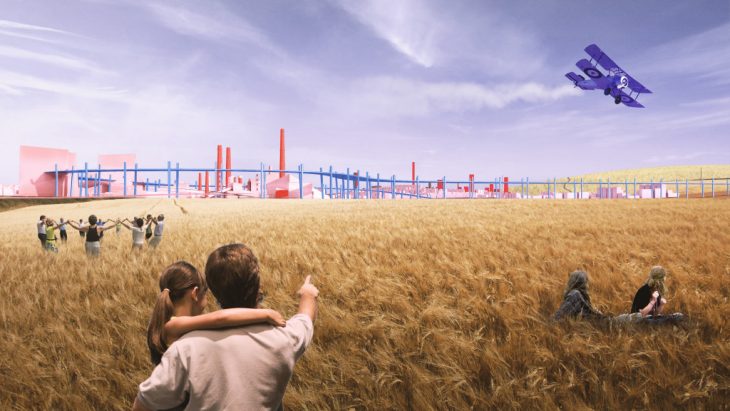
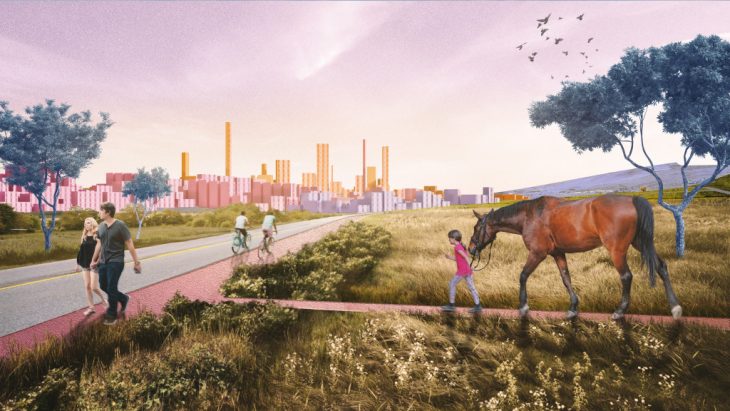
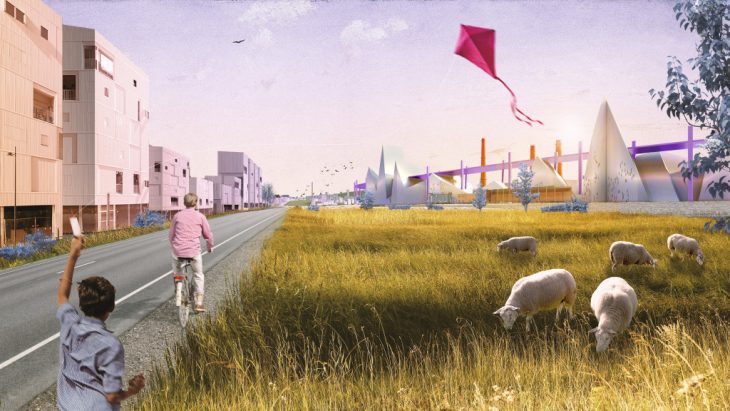

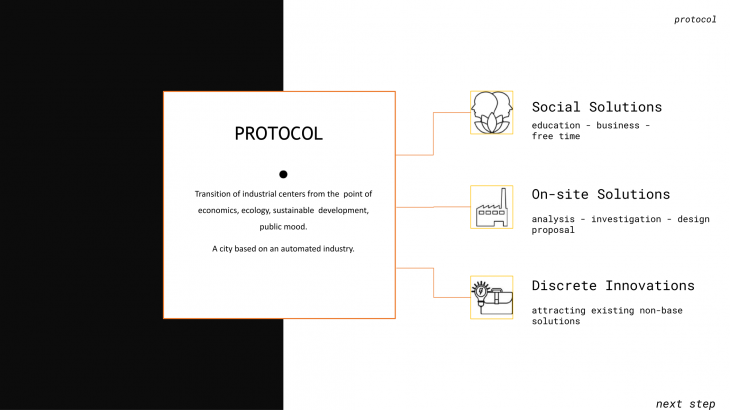 based on all of the above, the protocol as a whole fits into three categories of solutions
based on all of the above, the protocol as a whole fits into three categories of solutions
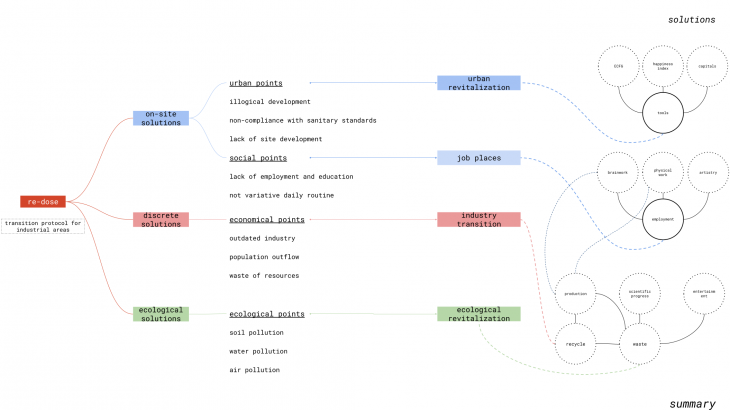 which, can also be disclosed in the following aspects
which, can also be disclosed in the following aspects
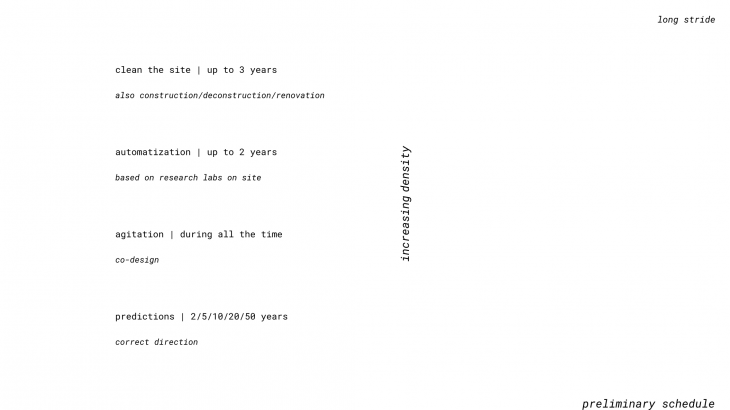 thus, the result of the draft stage of application of the protocol should be a similar rough schedule
thus, the result of the draft stage of application of the protocol should be a similar rough schedule
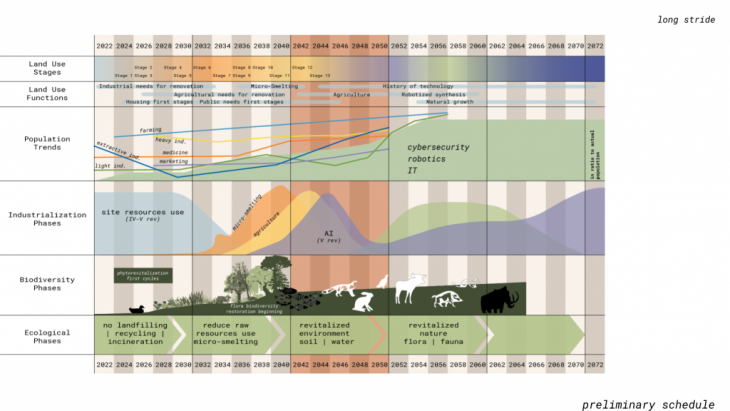 which is revealed in a detailed plan of each of the aspects for the next fifty years, while even such a period of time is ambitious, certainly after it, it is worth making the following assumptions about further development
which is revealed in a detailed plan of each of the aspects for the next fifty years, while even such a period of time is ambitious, certainly after it, it is worth making the following assumptions about further development
Learning from Karabash, such regions as on the map will be able to leisurely and with natural costs conduct in the present / future cities with profitable industry, but completely not responding to a positive attitude towards other types of capital.
And as a summary, a pure production/business/revitalization cycle, small as a city itself.
Re-dose is a project of IAAC, Institute for Advanced Architecture of Catalonia developed in the MAA02 2019/21
by: Student: Alisa Iureva and Faculty: Gonzalo Delacamara + Mathilde Marengo

